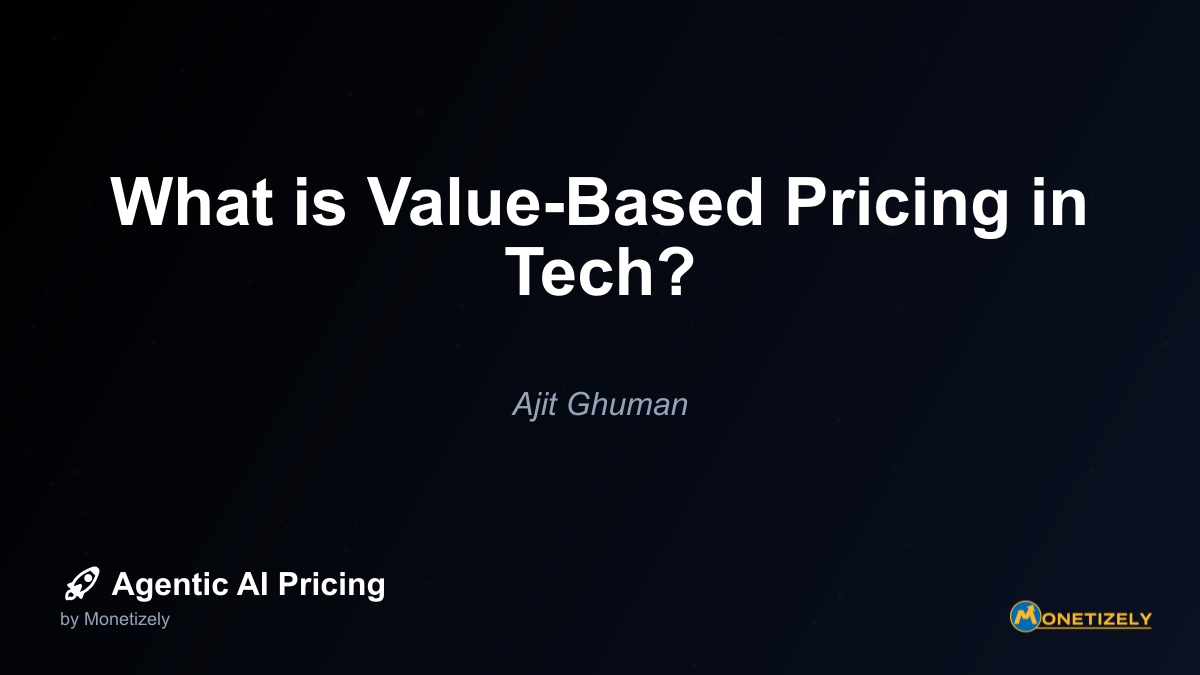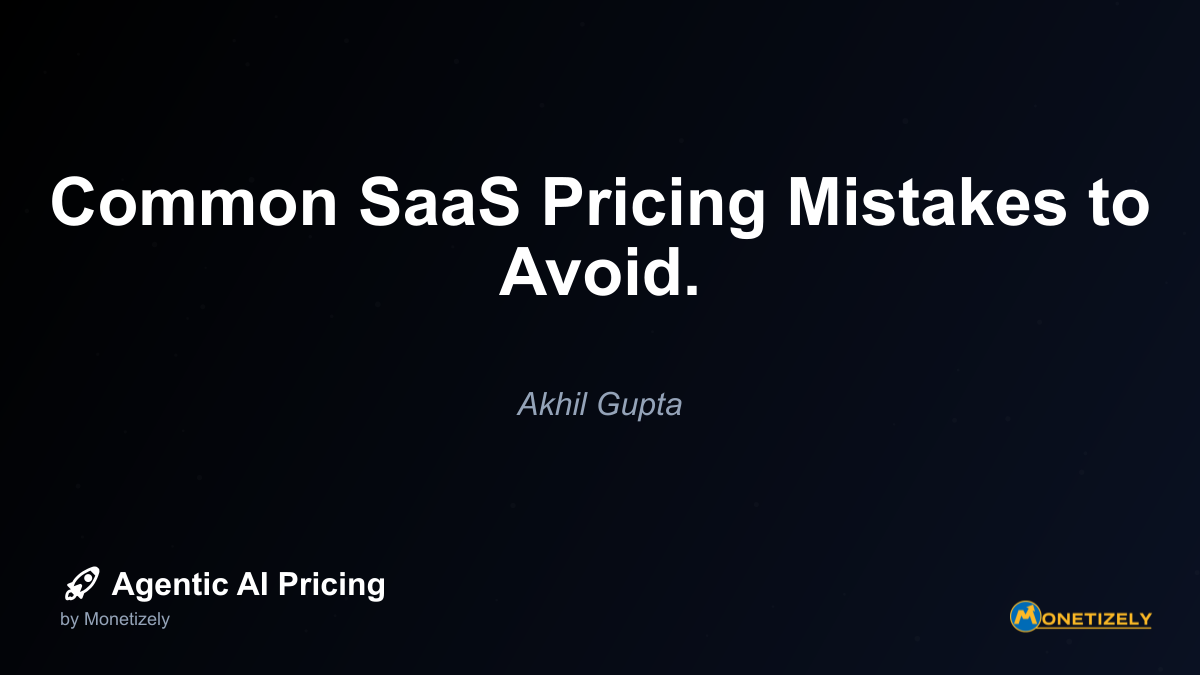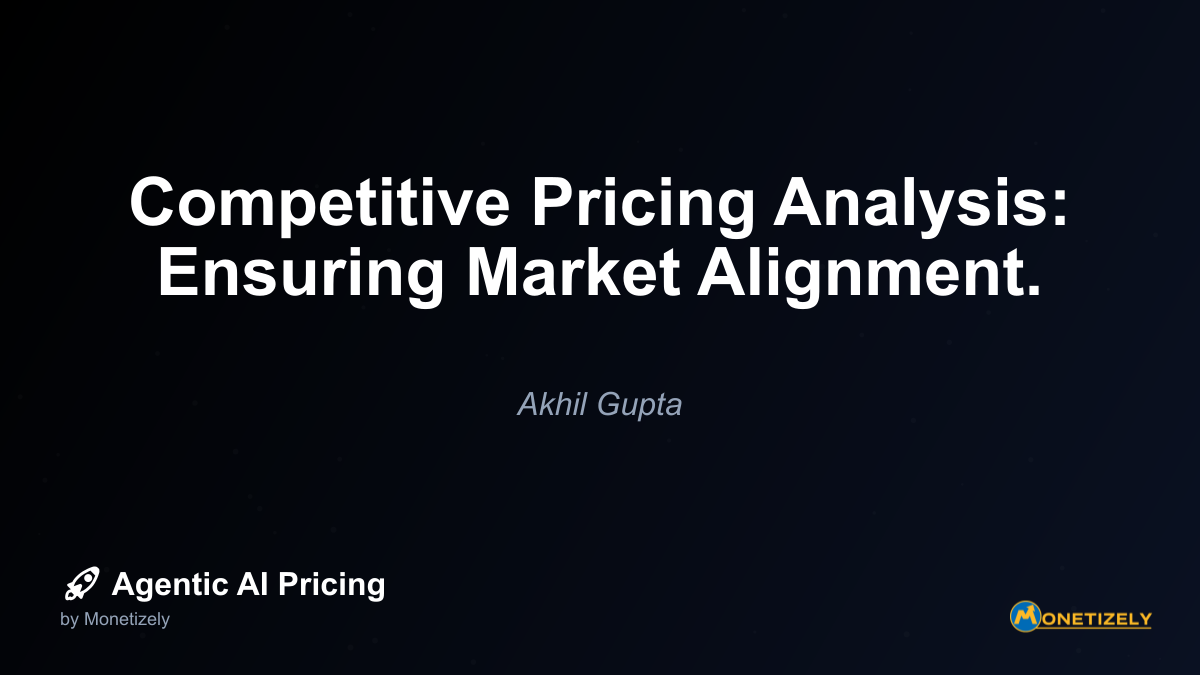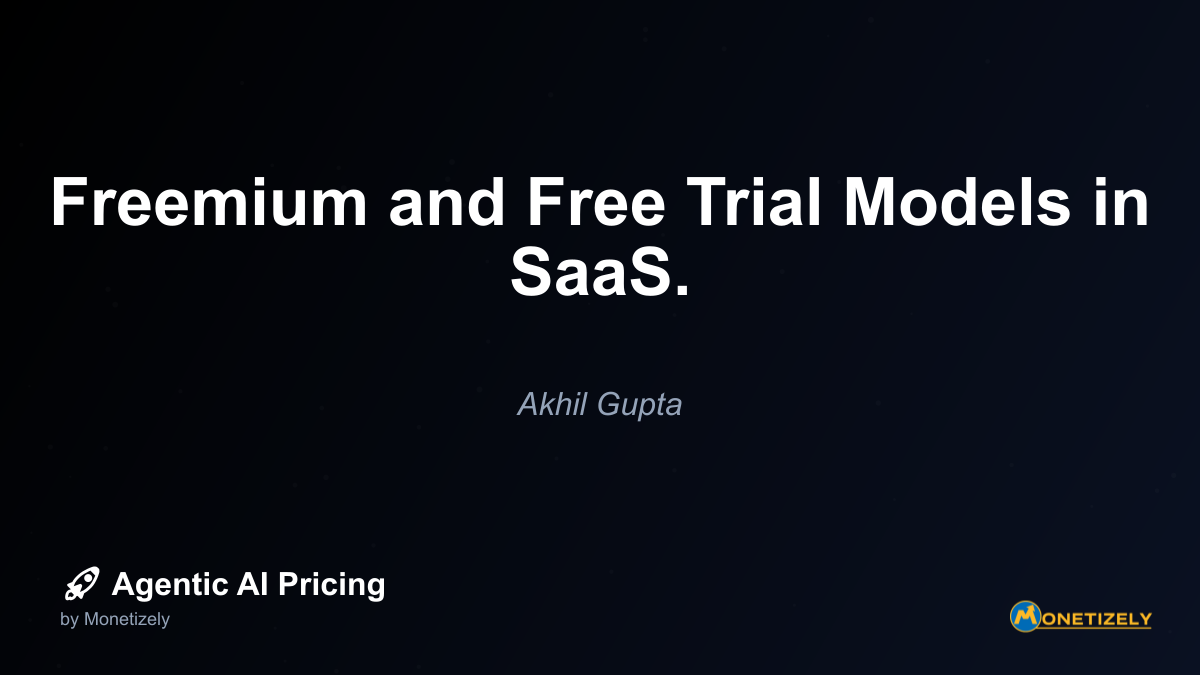· Ajit Ghuman · Pricing Fundamentals · 6 min read
Pricing Strategy vs. Pricing Model: What’s the Difference?
AI and SaaS Pricing Masterclass
Learn the art of strategic pricing directly from industry experts. Our comprehensive course provides frameworks and methodologies for optimizing your pricing strategy in the evolving AI landscape. Earn a professional certification that can be imported directly to your LinkedIn profile.
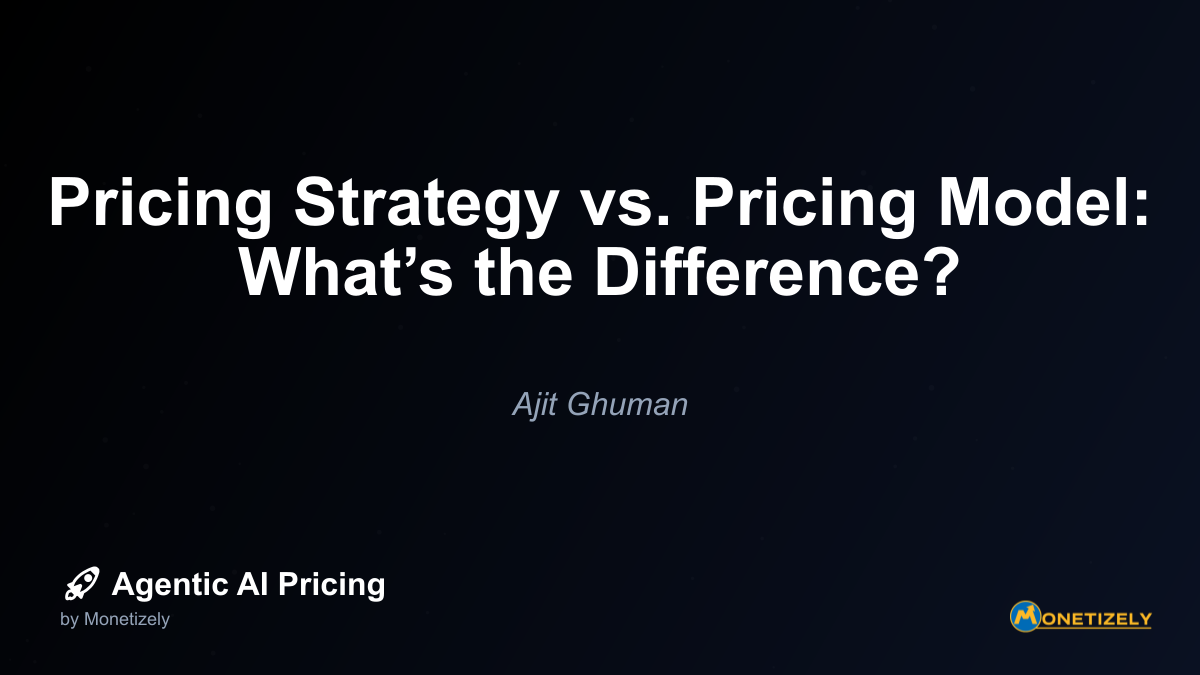
Special Considerations for Agentic AI Pricing
When it comes to agentic AI products, the relationship between pricing strategy and pricing model becomes even more critical. Agentic AI introduces unique value metrics and cost structures that require specialized approaches.
Strategy Considerations for Agentic AI
For AI agents, your pricing strategy should consider:
Value perception challenges: Since autonomous AI agents represent a relatively new category, customers may struggle to assess their value. Your strategy needs to emphasize tangible outcomes.
Cost variability: AI inference costs can fluctuate based on usage patterns, making cost-plus pricing strategies particularly challenging.
Competitive differentiation: As the market matures, your strategy must clearly position your AI agent’s unique capabilities relative to both traditional solutions and other AI offerings.
Adoption barriers: Your strategy should account for organizational change management and integration requirements that might slow adoption.
Model Considerations for Agentic AI
For AI agents, effective pricing models often include:
Hybrid approaches: Combining subscription access with usage-based components to align with both fixed and variable costs.
Outcome-based elements: Tying pricing to measurable business results to overcome value perception challenges.
Token-based structures: Reflecting the computational resources required by the agent to complete tasks.
Tiered usage allowances: Providing predictability for customers while capturing value from heavy users.
For example, an AI agent for customer service might employ a pricing strategy focused on cost reduction and service quality improvement, implemented through a model that combines a base platform fee with charges for conversation minutes beyond a generous monthly allowance.
Common Misalignments Between Strategy and Model
When pricing strategy and pricing model don’t align, businesses often encounter problems:
Misalignment 1: Premium Strategy with Commodity Model
Scenario: A company positions its AI agent as a premium solution with unique capabilities but prices it using a simple per-user model identical to competitors.
Problem: The pricing model fails to communicate or capture the premium value, undermining the strategy.
Solution: Align with premium positioning by incorporating value-based metrics specific to the AI agent’s unique benefits.
Misalignment 2: Mass-Market Strategy with Complex Model
Scenario: A company aims to achieve widespread adoption with a mass-market strategy but implements a complex pricing model with numerous variables.
Problem: The complexity creates friction in the buying process, contradicting the goal of easy adoption.
Solution: Simplify the model to support the mass-market strategy, potentially using a freemium approach with straightforward upgrade paths.
Misalignment 3: Usage-Based Strategy with Flat-Rate Model
Scenario: A company wants to align pricing with customer value (which varies by usage) but implements a flat-rate subscription.
Problem: Heavy users get disproportionate value while light users overpay, creating customer satisfaction issues at both ends.
Solution: Implement a usage-based or tiered model that better reflects the strategy’s intent to align price with value received.
How to Develop Your Pricing Strategy and Model
Creating effective pricing requires a systematic approach that addresses both strategy and model considerations:
Step 1: Research and Analysis
- Conduct customer research to understand value perception and willingness to pay
- Analyze competitive offerings and positioning
- Assess your cost structure and margin requirements
- Identify key value metrics that correlate with customer outcomes
Step 2: Strategy Formulation
- Define your market positioning (premium, value, etc.)
- Identify target customer segments
- Establish strategic pricing objectives (market share, revenue maximization, etc.)
- Determine your approach to price discrimination and segmentation
- Plan for pricing evolution over product lifecycle
Step 3: Model Design
- Select appropriate pricing units (users, usage, features, etc.)
- Design tier structures if applicable
- Set specific price points
- Develop discount frameworks
- Create packaging that reflects your strategy
Step 4: Implementation Planning
- Prepare sales enablement materials
- Design billing systems and processes
- Create customer communication plans
- Develop objection handling frameworks
- Plan migration strategies for existing customers (if applicable)
Step 5: Testing and Optimization
- Test pricing with customer segments
- Analyze conversion metrics
- Gather feedback on clarity and perception
- Make incremental improvements
- Establish ongoing monitoring processes
Case Study: Evolving Strategy and Model in an AI Agent Business
Consider the example of an AI agent platform that helps businesses automate customer support interactions. Their pricing evolution demonstrates the interplay between strategy and model:
Initial Phase:
- Strategy: Penetration pricing to drive adoption in a new category
- Model: Simple per-agent pricing ($500/month per AI agent deployed)
- Results: Good initial adoption but challenges scaling as customers questioned value relative to cost
Growth Phase:
- Strategy: Value-based pricing focused on cost reduction outcomes
- Model: Base platform fee + per-conversation pricing with volume discounts
- Results: Better alignment with customer value perception but complexity in forecasting costs
Maturity Phase:
- Strategy: Market segmentation with industry-specific value propositions
- Model: Industry-specific packages with outcome guarantees (e.g., “Reduce support costs by 30% or pay nothing”)
- Results: Higher conversion rates and improved customer satisfaction
This evolution shows how both strategy and model must adapt as the market, product, and customer understanding evolve.
Choosing the Right Model for Your Strategy
When selecting a pricing model to implement your strategy, consider these alignment principles:
Value Metric Alignment: Choose a model based on metrics that customers associate with value (e.g., time saved, revenue generated, resources consumed)
Simplicity vs. Precision Balance: More complex models can better capture value but increase friction; your strategy should guide this tradeoff
Growth Incentives: Select a model that encourages behaviors aligned with your strategic goals (e.g., adoption, expansion, retention)
Cost Recovery: Ensure your model accounts for your cost structure, especially for AI products with variable inference costs
Competitive Differentiation: Use your model to reinforce your strategic positioning relative to alternatives
For example, if your strategy emphasizes becoming the standard solution in your category, a freemium model with network effects might align well. If your strategy focuses on serving enterprise customers with mission-critical needs, a high-touch, customized pricing model with professional services components would be more appropriate.
Conclusion: The Strategic Advantage of Alignment
The distinction between pricing strategy and pricing model is more than semantic—it’s fundamental to effective monetization. Your pricing strategy provides the compass that guides your overall approach to capturing value, while your pricing model offers the specific vehicle to implement that strategy in the market.
For businesses deploying agentic AI solutions, this distinction becomes even more critical. The novelty of the technology, combined with evolving cost structures and customer understanding, requires careful alignment between strategic intent and tactical implementation.
By developing a clear pricing strategy first, then selecting and refining a complementary pricing model, you create a powerful foundation for sustainable growth. This aligned approach helps you communicate value effectively, capture fair compensation for the benefits you deliver, and build pricing as a competitive advantage rather than merely a necessary business function.
Remember that both your strategy and model should evolve as your product matures, your costs change, and your market develops. Regular reassessment of both elements ensures your pricing continues to support your business objectives while delivering value to customers.
The most successful companies don’t view pricing as a one-time decision but as an ongoing strategic capability that drives business performance. By understanding the critical distinction between pricing strategy and pricing model—and ensuring their alignment—you position your business to thrive in the rapidly evolving landscape of agentic AI.
Co-Founder & CEO
Ajit is the author of Price To Scale, a top book on SaaS Pricing and is the Founder of Monetizely. Ajit has led and worked in pricing and product marketing at firms like Twilio, Narvar and Medallia. His work has been featured in Forbes and VentureBeat. Ajit regularly consults with software companies from Seed stage to post-IPO on pricing strategy. Ajit is also a highly-rated co-instructor for 'The Art of SaaS Pricing and Monetization' on Maven.
Pricing Strategy Audit
Let our experts analyze your current pricing strategy and identify opportunities for improvement. Our data-driven assessment will help you unlock untapped revenue potential and optimize your AI pricing approach.

